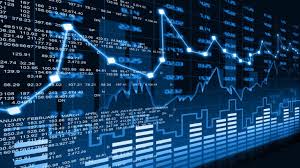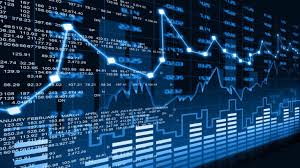
The Bank of America Merrill Lynch is of the opinion that tightening of credit conditions and slowing down of earnings could result in stocks stall out next year.
"We believe the peak in equities is likely before the end of 2019," wrote Savita Subramanian, equity and quantitative strategist at Bank of America Merrill Lynch, in a note this week. She said that it is possible that the S&P 500 would increase slightly to 3,000 by the end of the current year and then see a drop of 3 per cent at 2900 in 2019.
"Our rates team is calling for an inverted yield curve during the year, homebuilders peaked about one year ago and typically lead equities by about two years and our credit team is forecasting rising spreads in 2019," Subramanian said. "Assuming the market peaks somewhere at or above 3000, our forecast is for modest downside in 2019."
Economists say that an inverted yield curve happens when there is higher yield from short-term sovereign debt, like the two-year Treasury note, compared to the rate the longer-dated paper like the benchmark 10-year Treasury note. Typically, an economic recession follows an inverted yield curve.
There have been predictions of the possibility of inverting of the Treasury yield curve thus year. There was a widening in the spread between the 10-year and two-year yields which has been a phenomenon since the three times hiking of rate by the US Federal Reserve. Economists are expecting another rate hike by the Fed by the end of the current year.
There would possible be greater volatility in the equity market with the flattening of the yield curve according to Subramanian with the possibility of more firms getting into the bear market.
"Still-supportive fundamentals, still-tepid equity sentiment and more reasonable valuations keep us positive. But in 2019, we see elevated likelihood of a peak in the S&P 500," she noted. She added that following a very fruitful 2018, it is likely that the earnings growth for S&P 500 would slow down considerably. In the first three quarters of the year, there was an increase of 25 per cent in S&P 500 earnings – driven mostly by the huge corporate tax cuts announced by US president Donald Trump.
But for investors, there is always opportunity for investment in areas where they have not yet looked at till such time the equity market remains dull – cash. "There is now an alternative for stocks," Subramanian said, and added that compared to 60 per cent of the S&P 500 companies, cash yields are higher currently. "Cash is now competitive and will likely grow more so … our Fed call puts short rates close to 3.5% by the end of 2019, well above the S&P 500's 1.9% dividend yield."
Suring the low interest period followed by the Fed, cash generated next to nothing and therefore investors believed that there is no alternative to the equity markets during the bull market period.
According to the suggestions by Subramanian, investors should look to invest in health care, technology and financials companies.
(Source:www.cnbc.com)
"We believe the peak in equities is likely before the end of 2019," wrote Savita Subramanian, equity and quantitative strategist at Bank of America Merrill Lynch, in a note this week. She said that it is possible that the S&P 500 would increase slightly to 3,000 by the end of the current year and then see a drop of 3 per cent at 2900 in 2019.
"Our rates team is calling for an inverted yield curve during the year, homebuilders peaked about one year ago and typically lead equities by about two years and our credit team is forecasting rising spreads in 2019," Subramanian said. "Assuming the market peaks somewhere at or above 3000, our forecast is for modest downside in 2019."
Economists say that an inverted yield curve happens when there is higher yield from short-term sovereign debt, like the two-year Treasury note, compared to the rate the longer-dated paper like the benchmark 10-year Treasury note. Typically, an economic recession follows an inverted yield curve.
There have been predictions of the possibility of inverting of the Treasury yield curve thus year. There was a widening in the spread between the 10-year and two-year yields which has been a phenomenon since the three times hiking of rate by the US Federal Reserve. Economists are expecting another rate hike by the Fed by the end of the current year.
There would possible be greater volatility in the equity market with the flattening of the yield curve according to Subramanian with the possibility of more firms getting into the bear market.
"Still-supportive fundamentals, still-tepid equity sentiment and more reasonable valuations keep us positive. But in 2019, we see elevated likelihood of a peak in the S&P 500," she noted. She added that following a very fruitful 2018, it is likely that the earnings growth for S&P 500 would slow down considerably. In the first three quarters of the year, there was an increase of 25 per cent in S&P 500 earnings – driven mostly by the huge corporate tax cuts announced by US president Donald Trump.
But for investors, there is always opportunity for investment in areas where they have not yet looked at till such time the equity market remains dull – cash. "There is now an alternative for stocks," Subramanian said, and added that compared to 60 per cent of the S&P 500 companies, cash yields are higher currently. "Cash is now competitive and will likely grow more so … our Fed call puts short rates close to 3.5% by the end of 2019, well above the S&P 500's 1.9% dividend yield."
Suring the low interest period followed by the Fed, cash generated next to nothing and therefore investors believed that there is no alternative to the equity markets during the bull market period.
According to the suggestions by Subramanian, investors should look to invest in health care, technology and financials companies.
(Source:www.cnbc.com)





